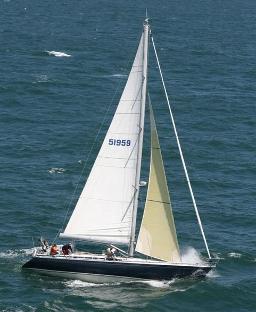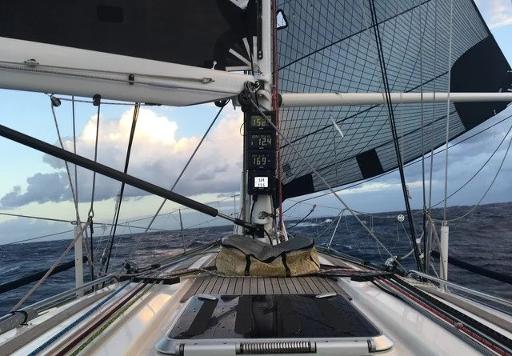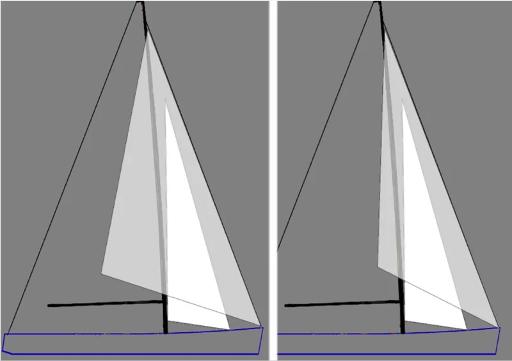Continuing our series of ‘Guest Posts’, this week, we asked Charles ‘Butch ‘Ulmer from UK Sailmakers NY for his thoughts on sail wardrobe, what sails take on board and setting up the most favourable offshore cruising headsail configuration.
‘'The boat (see image) is a Grand Soleil 46 and the owner likes to cruise the New England coastal waters with his family, although he had plenty of crew at the time the photo was taken.

Since wind conditions in the New England Coast are light a large genoa (150%) on the headstay is used a lot.
However, the boat was always overpowered when the breeze comes up (blowing 20-25 when this photo was taken) and he asked me to help.
I made him a large forestaysail to hank on his inner forestay. It was made with a light but strong Kevlar laminate and no battens.
The sail could be folded and stowed in a small bag or sail wardrobe and was also easy to handle.’
The sail improved the boat’s performance in a breeze (note the bow wave) and dramatically reduced heel, making life much more comfortable. Tacking was an easy maneuver, because the sail did not overlap the mast.
Now let’s take it up a notch and consider the case of an ocean voyage:
On the staysail I believe hanks should be used, as opposed to a furler; if the wind continues to build, the staysail can be lowered (the hanks keeping it under control), and the storm jib can be hanked-on over it and hoisted.
The forestay can be 1x19 wire or a high strength, low stretch, fiber cable, in which case, the two sails would have soft hanks.

Swan 4 Triple Lindy- 2017 Middle Sea Race, Courtesy of Charles ‘Butch’ Ulmer
It is important to have a good way of tensioning the forestay. On most rigs, the forestay is opposed by runners, which is prudent. For the sail on the furler, a smaller LP sail (say 110%- 120%) with a high clew, or a jib topsail cut to go to windward is recommended.
The high clew increases the sail’s overlap, trims more evenly when eased for a reach, and keeps the sail from scooping water when the seas are up and you can wing it out using a spinnaker or a whisker pole in heavy running conditions.
In heavy-running conditions, the high clewed sail can be swung out with a spinnaker or whisker pole.
In light air or reaching, the skipper can use the jib-top and staysail together.
When the breeze comes up, first lower the staysail and if it increases, hoist the staysail and furl up the jib-top. Due to its small size, the jib-top furls away in just a few turns.

Primary Jibs for Offshore Cruising- Diagram courtesy of UK Sailmakers NYC
'Finally, most long voyage sailors plan their routes to be down wind. Top-down furling with a Cruising Code 0 and Spinnaker is a must. This works best with a short prod or sprit at the bow.''
UK Sailmakers is one of the world's most established groups of sail makers, delivering sails using the most advanced design technologies and materials. All UK Sailmakers lofts are owned by local sailors, who know the needs of their sailing communities. Charles ‘Butch’ Ulmer is the Founder of the UK Sailmakers Group and is now a consultant to UK Sailmakers International and UK Sailmakers New York Metro.
If you have any questions about sails and sail wardrobe, please feel free to email us at [email protected], or click the link below to see our code zero and asymmetric furlers full range:


Guest Post- What is the perfect sail wardrobe for blue-water cruising?